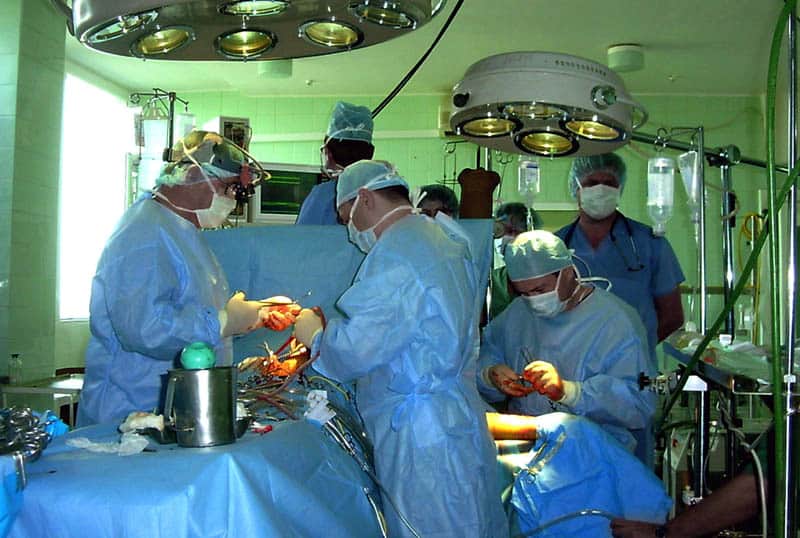
What is a Medical Malpractice Early Discussion and Resolution (EDR) Program?
For many years, the medical and legal communities have searched for new ways to address and resolve medical malpractice claims. One method being considered more than ever is a medical malpractice Early Discussion and Resolution…
For many years, the medical and legal communities have searched for new ways to address and resolve medical malpractice claims. One method being considered more than ever is a medical malpractice Early Discussion and Resolution (EDR) Program. Similar to Alternative Dispute Resolution (ADR), EDR offers some specific and unique advantages.
In this article, we will take a look at the current climate of medical malpractice cases, then discuss what EDR is, and how it could be potentially useful for medical malpractice victims.
Current Medical Malpractice Climate
The climate surrounding many medical malpractice claims is highly adversarial. The complicated nature of the doctor-patient relationship, determining the standard of care, and meeting requirements to file a lawsuit are challenges to even the most seemingly obvious cases.
One of the most challenging elements of medical malpractice laws and regulations is striking a balance between what allows worthy claims, and what discourages frivolous claims. Victims of medical malpractice certainly need the opportunity to state their case, but laws must be strict enough to reduce the number of frivolous or fraudulent claims.
Both sides – patients and providers – of the healthcare negligence issue have certain arguments that are valid and worth consideration. For example, patients continue to argue that laws, regulations, and resolution methods need to focus on patient safety. Providers tend to argue that laws and regulations create obstacles and increase insurance premiums to the point of being restrictive.
With so much tension related to the issue, medical malpractice dispute resolution methods are often said to be in “crisis”. In response, many states have recently explored dispute resolution methods that are “unconventional” or “new”, such as the EDR program.
To learn more about medical malpractice laws in your state, contact MedMalFirm.com to speak with one of our medical malpractice attorneys.
What is a Medical Malpractice Early Discussion and Resolution (EDR) Program?
An Early Discussion and Resolution (EDR) Program is akin to an extended conversation. Both parties agree to converse, and a series of steps are taken to encourage resolution. There are several truly unique elements to the EDR Program, such as:
- EDR legislation requires that the EDR Program is not identified as a malpractice claim, so reporting requirements do not apply.
- All communications must be oral, expect payment offers or other statements as applicable and agreed upon.
- Conversations in the EDR Program are confidential, are not considered an admission of liability, and cannot be used in any subsequent legal proceedings.
- If the EDR Program is unsuccessful, mediation is offered as a next step toward resolution. Both parties maintain their right to a legal proceeding should both methods fail to resolve the matter.
The primary goal of the EDR Program and related legislation is to increase access to information, to increase compensation, to reduce costs, and to improve patient safety. These goals could create a “happy medium” for patients and providers looking for an amicable resolution option.
What are the Issues/Concerns with the EDR Program?
Use of the EDR Program is still considered in “infancy”, and more research is needed to determine how successful the program could be. What is known, based on research, is that increased communication between patients and providers has a positive impact on how cases are resolved. Some research shows that prompt communication and access to a “confidential space” to discuss adverse medical events is “paramount” toward finding successful resolution.
Researchers further note some specific uncertainties about the EDR Program that need to be addressed before the program is used on a broader scale. These uncertainties include:
- Incentive for providers to seek out a voluntary dispute resolution process
- Assurance that patients have adequate access to legal guidance throughout the process – informal though it may be.
- Evaluating whether it makes sound policy sense to obviate mandatory reporting to a national database. This measure could protect other patients who may unknowingly seek medical attention from an unsafe provider.
Dispute Resolution for Your Medical Malpractice Claim
There are several options that you may have to resolve a medical malpractice claim. Often times, claims are settled through negotiations before a trial ever begins. Processes like ADR and EDR offer alternatives to lengthy and costly legal proceedings, which could help victims get results and compensation faster.
The only way to determine what dispute resolution methods are right for your medical malpractice case is to consult with a medical malpractice attorney. At MedMalFirm.com, our attorneys have worked on all sorts of medical malpractice cases, and we are known for getting results for our clients. We take an individualized approach to every case to make sure the legal process works for your situation.
To schedule your free case evaluation, fill out our online form, or call our office. Our staff is highly responsive and will get back in touch with you as soon as possible.
